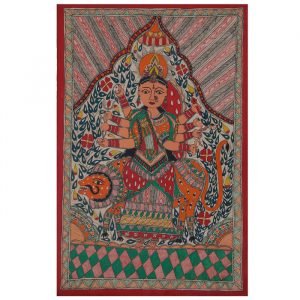Madhubani painting originated in a small village, known as Maithili, of the Bihar state of India. The first reference to the Maithili painting of Bihar dates back to the time of Ramayana, when King Janaka ordered the paintings to be created for his daughter, Sita’s wedding.
Initially, the womenfolk of the village drew the paintings on the walls of their home, as an illustration of their thoughts, hopes and dreams. With time, the paintings started becoming a part of festivities and special events like marriage. Slowly and gradually, the Madhubani painting of India crossed the traditional boundaries and started reaching connoisseurs of art, both at the national as well as the international level.
The brush used for Madhubani paintings of Bihar was made of cotton, wrapped around a bamboo stick. The artists prepare the colors that are used for the paintings. Black color is made by adding soot to cow dung; yellow from combining turmeric (or pollen or lime) with the milk of banyan leaves; blue from indigo; red from the kusam flower juice or red sandalwood; green from the leaves of the wood apple tree; white from rice powder and orange from palasha flowers. The traditional base of freshly plastered mud wall of huts has now been replaced by cloth, handmade paper and canvas. Since the paintings have been confined to a limited geographical range, the themes as well as the style are, more or less, the same. The themes on which these paintings are based include nature and mythological events.
The characteristic eye-catching patterns are very striking and beautiful. Madhubani paintings can be used to grace almost all occasions such as birth or marriage as well as and festivals. Or you can simply fill up that empty space on your home and office walls with these vibrant paintings!



